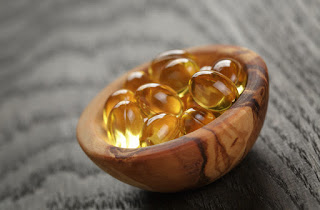Saturday, March 25, 2017
5 Natural Remedies to Help Your Itchy Dog
NATURAL REMEDIES FOR ITCHY DOGS
We all know the feeling of an itch that won’t go away. Whether it’s due to a bug bite, dry skin, or an allergic reaction, itching can be a real pain. But what happens when your dog won’t stop scratching, licking, or chewing on himself?
“Dogs manifest itching in a variety of ways,” says Dr. Andrew Rosenberg, a board certified veterinary dermatologist and the medical director of Animal Dermatology & Allergy Specialists in White Plains, New York, and Riverdale, New Jersey. “A lot of times, we’ll just see dogs licking at their paws as their way of relieving itch.” Other not-so-common signs may include scooting, rolling around on the ground, and crawling on their bellies, he says.
Allergies are a common cause of itchy skin in dogs, according to Rosenberg. He cites three major allergy categories: environmental (grass, weed, trees, dust, etc.); flea, tick, or bug bites; and food allergies.
Dogs having allergic reactions tend to be itchy around their paws, ears, groin area, and rear ends, he says. With other skin diseases like flea allergies, dogs scratch and bite more on their rump area. Dogs experiencing an autoimmune skin disease or skin infection can be itchy anywhere.
Occasional or mild itching by itself isn’t too serious, but it could be a sign of a more serious condition when accompanied by other symptoms, Rosenberg says. He recommends that pet parents consult their veterinarian or seek the help of a veterinary dermatologist “if there’s itching that’s chronic and the dog is breaking its skin and that results in skin infection. Or if the dog is just uncomfortable, itching to the point where they can’t sleep at night.”
To give your itchy dog some relief, consider these five natural remedies offered by our vet experts. It’s wise to consult a veterinarian before starting on any therapy, Rosenberg advises. “We want to make sure we’re recommending things that are going to help with the individual dog.” If the treatment doesn’t appear to be effective or if the condition worsens, seek professional help.
OMEGA-3 FATTY ACIDS
“Omega-3 fatty acids in general can help reduce inflammation,” Rosenberg says. You can administer omega-3s topically like you would a spot-on flea medication, give them orally, or spray the essential fatty acids on the spot directly. In addition to reducing itchiness, omega-3s also might help a dog with dry skin.
FISH AND SWEET POTATO DIET
Feeding a fish and sweet potato diet might help your itchy dog, suggests Dr. Diane Richter, owner of Compassion Veterinary Hospital in Bradford, New Hampshire, who practices both Western and alternative medicines.
Richter recommends fish because most dogs with food allergies are allergic to proteins commonly found in dog foods, such as chicken, beef, or turkey. Another perk of feeding your dog fish is that certain types are high in omega-3 fatty acids. “You’re picking a protein source that’s going to get more fatty acids and oils into the diet,” Richter says. This can decrease inflammation in the skin and help with potential food allergies, she adds.
She also frequently sees dogs with wheat and gluten sensitivities. Sweet potatoes provide the carbohydrates that dogs need in their diets, but lack the wheat that might trigger an allergic reaction, Richter says.
Richter suggests trying the diet for six weeks and only feeding that diet. For variety, you can make treats using salmon or sweet potatoes, she says. Richter also recommends buying a commercial dog food with fish and sweet potatoes (as opposed to making it yourself) since it’s tough to get all the nutrients your dog needs into a home-cooked diet.
COLLOIDAL OATMEAL
To help calm your dog’s irritation, you can grind plain oatmeal into a fine paste and spread it onto his skin, Richter suggests. “The oatmeal itself seems to draw that heat out and dry that moist, red, hot skin and cool it down.”
Oatmeal is non-toxic, so there is no need to worry if your pet licks it off. Alternately, you can purchase dog shampoo with oatmeal as an ingredient, Richter says. Bathing your pet with an oatmeal shampoo has the added benefit of removing potential allergic triggers, like pollen and mold spores, that get trapped in the fur.
LAVENDER, TEA TREE, AND CALENDULA FLOWER OILS
Lavender, tea tree, and calendula flower oils have anti-inflammatory properties that can help dogs, Richter says.
She cautions that tea tree oil can be toxic if ingested, so it’s important to watch your dog to make sure he doesn’t lick it off and always dilute it before use.Concentrated tea tree oil can be quite dangerous for dogs. If you’ve never used essential oils on your dog before, consider doing a patch test with a small, diluted drop to ensure he doesn’t have a bad reaction.
ALOE VERA
Aloe vera can be applied topically to soothe your dog’s skin and promote healing. “Aloe is a wonderful healing agent,” Richter says. “It cools the skin and takes down the redness.”
Richter says it’s important to use an aloe vera lotion that doesn’t contain alcohol, because it can burn the skin. You can either buy aloe vera from a grocery store or drugstore, or harvest fresh gel at home if you have an aloe vera plant.
Subscribe to:
Post Comments
(
Atom
)












No comments :
Post a Comment